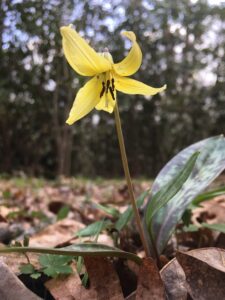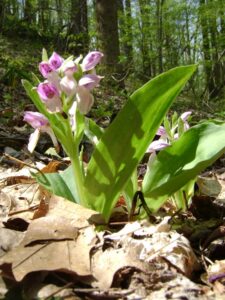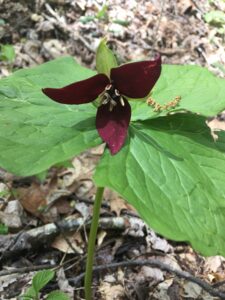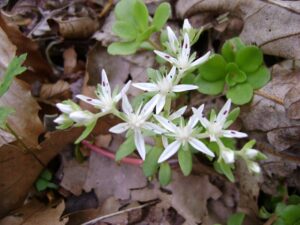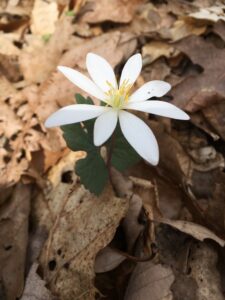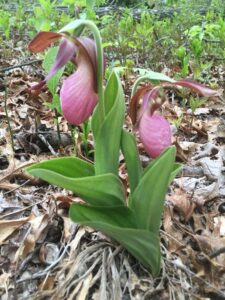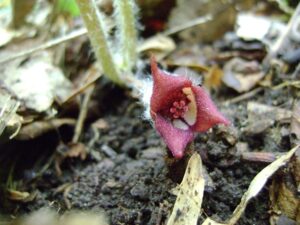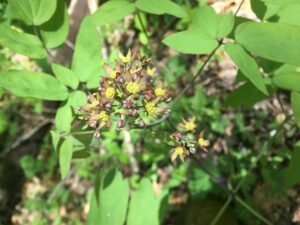One of my favorites things to do each spring in NC is hunt for wildflowers. From when the first crocuses and snow drops appear in February, I eagerly anticipate the coming flurry of emerging life below the tree tops. All through April and May, I go out into the wet woods every couple of days to check who has joined the party. Each year, it feels like greeting old friends.
What are spring ephemerals?

Trees take some time in the spring to come out of dormancy. Meanwhile, the herbaceous life on the forest floor gets busy right away. It takes advantage of the brief window of warming earth and sunlight before the leaves emerge to block out the sun in the canopy above. These small flowering plants are known as spring ephemeral wildflowers, and are as short lived as their name suggests. In less than two months, they must leaf out, flower and set seed, before dying back to their roots.
The flamboyant colors, shapes and sizes attract native bees, flies and other insects who rely on these wildflowers as a critical source of food. Nectar from flowers like Dutchmen’s breeches ensure that bumblebees survive until summer. Trout lilies and spring beauties each feed varieties of miner bees that have specifically evolved for that one type of flower. Wild ginger lays its tempting flowers on the ground for flies and gnats crawling through the leaf litter. Plants like bloodroot do not produce nectar, but their pollen is food for bees instead.
Several of spring ephemeral wildflowers have evolved a mutualistic relationship with ants. Violets, spring beauties, trout lilies, and bloodroot, among others, add a blob of a nutritious substance to their seeds called elaiosome. Ants bring the seeds back to their nests, consume the elaiosome, and then discard the seed in their compost. This provides the seeds an ideal environment to germinate next year. Other plants, like mayapple, encase their seeds in tasty fruits. When box turtles come to eat the “apples,” their seeds are dispersed through the forest.
Getting a NC wildflower guide
As a farmer, I have learned to pay attention to the subtle messages of the earth. By watching the plants, I can learn about the quality of soil, variations in weather, and more. Every year, I take note of when and where I first notice each plant emerging and blooming. While the order remains the same, when I compare dates from year to year, some springs are clearly “early” and some are “late.” I let these wild plants, whom the forest tends without our help, inform how and when I cultivate my own garden.
There are many ways to learn about the wildflowers around the Celo Inn. Despite it’s outdated scientific names, my favorite guidebook is Newcomb’s Wildflower Guide for both it’s thoroughness and ingenious key system. Even better, however, is a tour with a knowledgeable guide. Tal Galton of Snakeroot Ecotours lives right down the road from the Celo Inn. Through careful attentiveness to the wonders of nature, he has cultivated a deep knowledge of the diverse ecosystems in western NC. His naturalist walks, guided hikes, and weekend retreats offer an eye-opening experience for both expert naturalists and nature-curious visitors alike. And, he knows where all the best wildflowers are.
–by Kavita Hardy
Ready to Make a Reservation?
We ask all new guests to review our reservation policies.
Then, email or call us for more information, to request a reservation, or arrange for a gift certificate!
